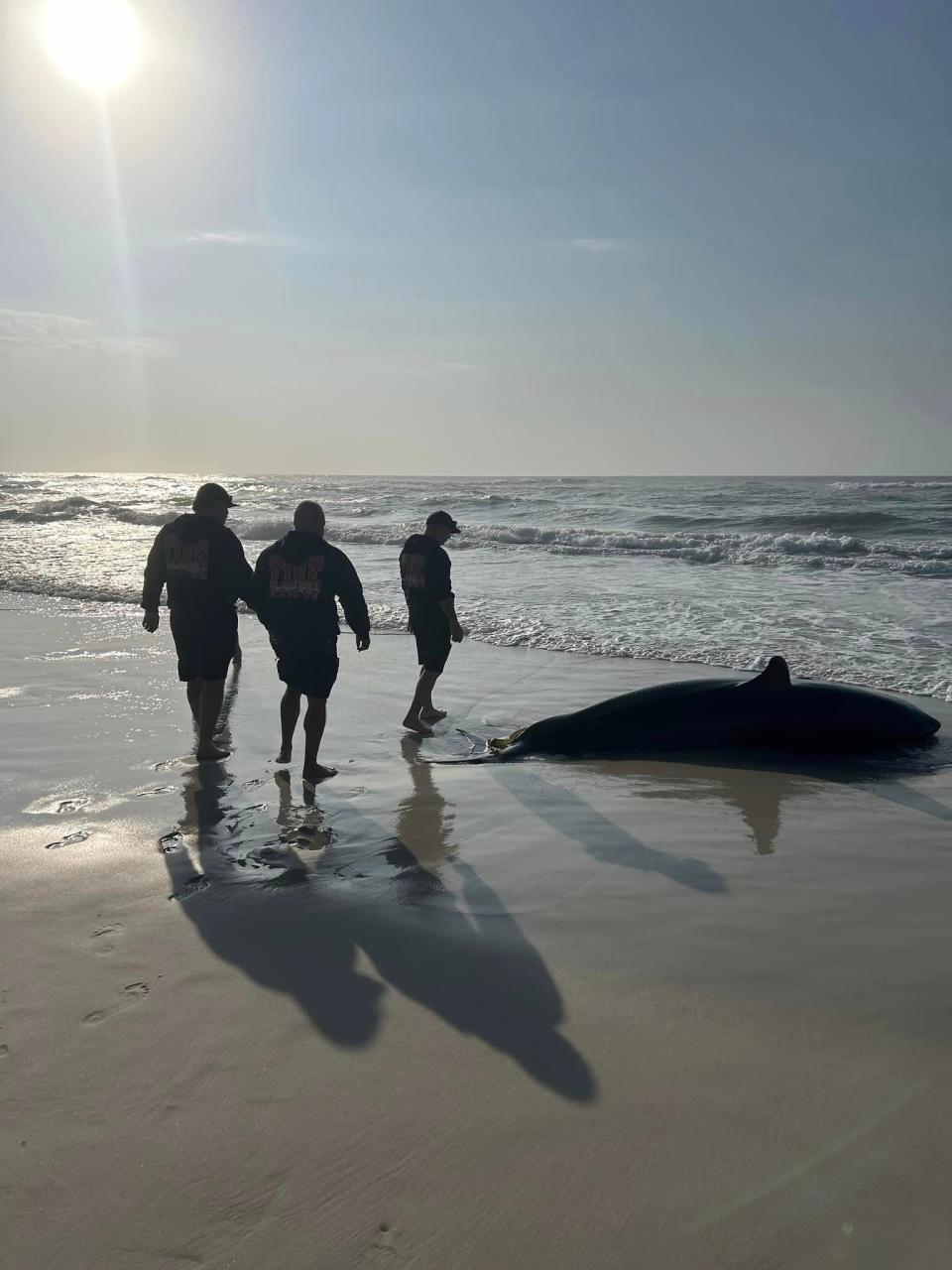NOAA got a rare opportunity to study great white shark discovered at Navarre Beach
A great white shark shocked beachgoers at Navarre Beach last week when it washed ashore Friday morning.
The shark was initially thought to be pregnant and estimated to be between 13 and 15 feet long and weighing 1,500 pounds. But a necropsy shed additional light on it and offered scientists a rare opportunity to study it.
Local partners quickly responded to the discovery of the shark and monitored it before the National Oceanic and Atmospheric Administration (NOAA) Fisheries Office of Law Enforcement could transport it to the NOAA Southeast Fisheries Science Center facility in Panama City.
Ultimately, the team wasn’t able to immediately determine the cause of death, but it was able to collect what it called “extremely rare” samples.
What we know: Great white shark found dead on Panhandle beach. Are they typically found in Florida waters?
More info about the great white shark that washed ashore Navarre Beach
Initial reports indicated that the great white shark found on Navarre Beach may have been pregnant, but the necropsy revealed this wasn’t the case.
According to NOAA, the shark was estimated to be close to 30 years old but wasn’t reproductively mature. This shark species can live to nearly 80 years old, and females are thought to mature between 30-35 years of age.
This finding was a surprise for biologists, according to NOAA.
“I was amazed that she was still immature. Previously, we thought most females could reproduce at this size. This shows just how little we know about these animals,” said John Carlson, a NOAA Fisheries research biologist who assisted with the necropsy.

NOAA confirmed that a circle hook was found inside the corner of the shark’s jaw, indicating it was recently caught and released.
The estimated length of the shark was pretty accurate as it measured approximately 15 feet long and was more than 8 feet in girth.
NOAA scientists were able to determine that the shark was female and that its reproductive organs were not yet able to reproduce, but would be in about a year or two.
What led to the shark’s demise still isn’t known as it seemed to be relatively healthy based on the necropsy.
NOAA indicated that the shark’s condition seemed to be normal and healthy. There were no indications that it was starving, diseased or had any trauma.
It’s rare for scientists to study deceased great white sharks
Great white sharks are one of the most well-studied shark species in the world, according to NOAA. So why was this such a rare opportunity for biologists?
Studying dead sharks allows them to collect samples they aren’t otherwise able to, such as vertebrae for aging, stomach contents for diet studies and reproductive measurements.
“Any opportunity to collect biological samples and data from a white shark is incredibly important for understanding their life history,” said Michelle Passerotti, fish biologist in the Northeast Fisheries Science Center Apex Predators Program.
“While strandings like this one are fairly rare even in the northern Atlantic where they have more resident populations, this event is extremely rare in the Gulf of Mexico and provides a treasure trove of information for this species.”
How to report a shark
If you see a sick, injured, or deceased shark along the Gulf of Mexico Coast, report it to the NOAA Southeast Fisheries Science Center by calling (850) 234-6541. When reporting, include:
Date and time
Location (GPS, closest street address, etc.)
Species (if known)
Approximate length
Condition (alive, freshly dead with little decay, dead with some decay, dead very decayed)
Tag number (if present and is safely accessible)
Consider collecting photos to document the animal’s condition at the time of sighting to share with scientists. This information can help them better understand and effectively manage shark populations.
This article originally appeared on Pensacola News Journal: Great white shark at Navarre Beach gave biologists rare opportunity

